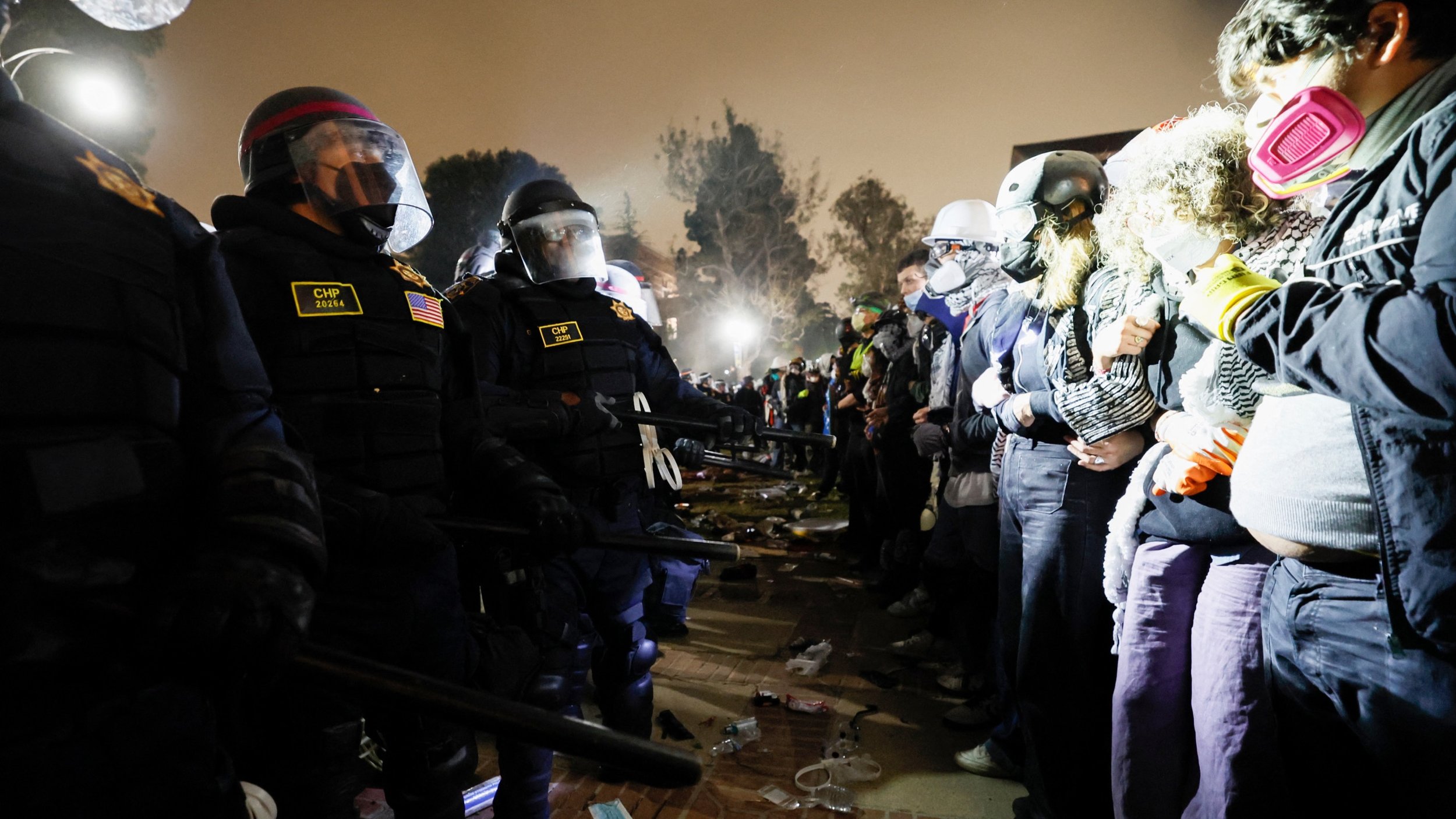UC’S U-TURN ON
PEACEFUL PROTEST
13 years ago, UC was condemned across the country for its violent response to protest against tuition increases and privatization. Administration adopted a new, more humane treatment regime against protesters—and then, when faced with demands that include greater transparency in UC finances, the right to refuse unethical funding sources, and an end to financial entanglement in Israel’s genocide in Gaza, they abandoned it. Academic workers, along with the broader movement, are now in a fight to return UC to the right side of history, and to ensure that our fundamental right to protest stays secure.

Academic workers, along with the broader movement, are now in a fight to return UC to the right side of history, and to ensure that our fundamental right to protest stays secure.
On September 13, 2012, the University of California published the Robinson-Edley Report, the result of an internal investigation into UC’s violent response to peaceful campus protests in 2011. The report made 49 recommendations calling for dramatic changes in the UC’s approach to handling protest, including that the university “recognize explicitly the historic role of civil disobedience as a protest tactic” and adopt strategies aimed at “reaching a peaceful accord with protesters without resorting to the use of force by police.”
By early 2014, the university considered its recommendations to have been almost fully implemented on every campus.
The following documents how the report’s recommendations have fared when faced with protest over UC’s financial entanglements in Gaza this spring
UC HAS USED FORCE AGAINST PROTESTORS
From the introduction to the Robinson-Edley report:
Between April 28 and 30, however, UC unambiguously permitted violence against protesters.
From the report’s recommendations:
On May 1, May 6 and May 15, UC allowed police to give protesters serious injuries, including burns, fractured wrists, nerve damage, and at least one subarachnoid hemorrhage. The goals that justified these injuries included clearing protesters from public quads and an empty building.
The report’s recommendations continue:
Between April 28 and April 30, UC police allowed counter-protesters to set up an enormous video screen and blast constant noise, including jingoistic music and the sounds of crying babies, to release live mice into a protest encampment, to pick fights with protesters, and finally to physically assault protesters en masse.
The report’s 35th and 36th recommendations:
What this means is that police officers should ultimately be required to employ force only commensurate with force being employed against them. The report specifically cites as an example existing police policies forbidding the use of baton strikes, mace, pepper spray or tasers against protesters who are not violently resisting arrest.
On May 1, May 6, and May 15, police used mace, flashbang grenades, and rubber bullets against protesters who were merely refusing to leave buildings and patches of grass.
UC HAS PERSONALLY RETALIATED AGAINST PROTESTERS
The report says:
Instead, UC has begun using student discipline alongside arrest against protesters who, in most cases, have not even disrupted a lecture.
From our union’s ULP charges:
UC HAS UNILATERALLY CHANGED ITS POLICIES TO CRUSH PROTEST
In the report’s introduction, the authors lay out their fundamental assumption:
Protesters are, in other words, part of the UC community like any other. In Spring 2024, however, UC has radically reconsidered this assumption and has begun simply expelling protesters from the community.
On May 9, the UC Office of the President implemented a new policy:
In practice, what this has meant for protesters is that arrest is accompanied by an immediate loss of employment and housing.
On May 16, the UC Regents further affirmed that amnesty for students, faculty and staff is inconsistent with this guideline. In other words, UC will not even consider withdrawing charges against students and workers who have been evicted for taking part in peaceful protest.



























